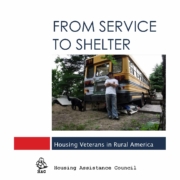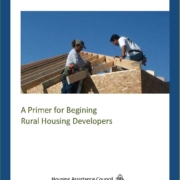Exploring the Challenges and Opportunities for Mortgage Finance in Indian Country
This report, Exploring the Challenges and Opportunities for Mortgage Finance in Indian Country, examines mortgage lending to American Indian and Alaska Natives particularly activity on federally recognized reservation lands (“reservations”). The analysis touches on the historic and social factors that have helped create the constrained mortgage lending environment on reservation lands. In addition to barriers like geographic isolation, economic distress, and mistrust, which are often found in rural areas, these lands have a nonstandard land ownership situation and an extra layer of federal oversight, as well. A review of mortgage lending data for Native American borrowers confirms activity is constrained on reservations. Such activity includes low origination rates, high denial rates, and a high proportion of loans made for manufactured homes.
Download the report
Sponsored by The Wells Fargo Housing Foundation.


 Housing Assistance Council
Housing Assistance Council